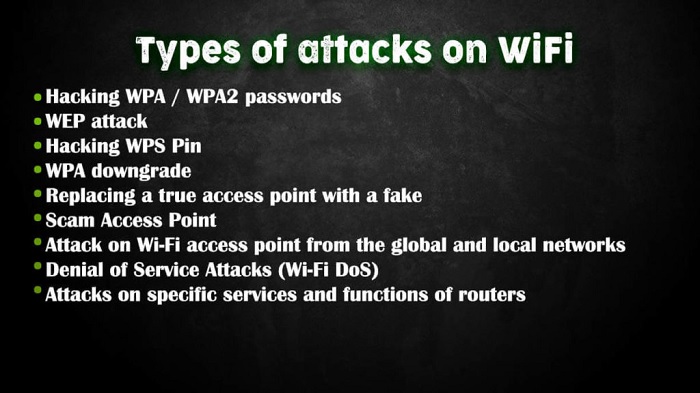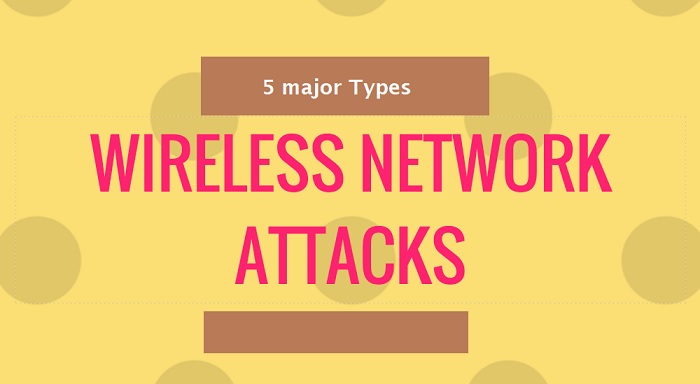Table of Contents
- Types of Common Wireless Attacks
- The Impact of Wireless Attacks on Security
- Protecting Yourself from Wireless Attacks
- Understanding the Different Types of Wireless Attacks for Best Results
Wireless attacks are malicious acts that target computers, networks, and devices that use wireless networks to communicate. These attacks can cause data breaches, network outages, and other serious consequences. There are several types of wireless attacks, including man-in-the-middle attacks, denial-of-service attacks, ad-hoc network attacks, rogue access point attacks, and war driving attacks. Understanding these types of attacks and how they work is essential for protecting your wireless networks from malicious actors.
Introduction to Wireless Attacks: The Basics
Wireless attacks pose a significant threat to networks of all sizes. From large corporations to small businesses, hackers are increasingly targeting wireless networks in order to gain access to confidential data. As such, it is essential for all network administrators to understand basic wireless attack methods in order to protect their networks. Wireless attacks can be divided into two main categories: passive and active. Passive attacks involve monitoring the wireless network traffic to gain information about the network. These attacks are typically used to gain an understanding of the wireless network and what type of data is being transmitted.
Active attacks are much more serious and involve the attacker actively disrupting or manipulating the network in order to gain access to it. Common examples of passive attacks include sniffing and eavesdropping. Sniffing is the process of capturing network packets on a wireless network and analyzing them to gain information about the network. Eavesdropping is similar to sniffing, but it involves listening in on wireless network conversations. Common examples of active attacks include man-in-the-middle attacks, spoofing, jamming, and denial of service attacks. Man-in-the-middle attacks involve the attacker intercepting information sent between two parties and manipulating it to gain access to the network.
Spoofing involves the attacker pretending to be a legitimate user in order to gain access to the network. Jamming is the process of the attacker sending out false signals which disrupt the communication between two legitimate users. Denial of service attacks involve flooding the network with traffic in order to overload it and prevent legitimate users from accessing it. It is important for all network administrators to understand the basics of wireless attacks and the threat they pose in order to protect their networks from malicious actors. By understanding the different types of attacks and implementing the necessary security measures, network administrators can help ensure the security of their networks.
Types of Common Wireless Attacks
Wireless networks are increasingly becoming vulnerable to a variety of attacks. Some of the most common types of wireless attacks are:
1. Man-in-the-Middle Attack (MITM): This type of attack involves an attacker intercepting communication between two systems and relaying it back and forth in order to gain access to sensitive information.
2. Denial of Service (DoS) Attack: This attack is designed to disrupt the normal functioning of a network by flooding it with malicious traffic, thus preventing legitimate users from accessing the network.
3. Rogue Access Point (AP) Attack: This type of attack involves an attacker setting up an unauthorized wireless access point in order to gain access to the network.
4. Jamming Attack: This attack involves an attacker sending out a high-powered signal in order to disrupt the normal functioning of the wireless network.
5. Replay Attack: This attack involves an attacker capturing and then re-transmitting data in order to gain access to sensitive information.
6. Evil Twin Attack: This type of attack involves an attacker setting up a malicious wireless access point that appears to be a legitimate one in order to gain access to the network.
7. Wi-Fi Phishing Attack: This attack involves an attacker sending out malicious emails or links that purport to be from a legitimate source in order to gain access to sensitive information. These are some of the most common types of wireless attacks that can be used to gain access to a network and its resources. It is important to be aware of these attacks in order to protect your wireless network from unauthorized access.
The Impact of Wireless Attacks on Security
Wireless networks are increasingly becoming the backbone of communication networks in our modern world. However, they also pose a significant risk to the security of sensitive data and systems. This article will explore the various types of wireless attacks that can be used to compromise security, and the potential impact they can have. Wireless attacks can be divided into two broad categories: passive attacks and active attacks. Passive attacks involve listening in on wireless traffic to gain information or access to a system. Examples of this type of attack include sniffing, eavesdropping, and wireless scanning.
Active attacks, on the other hand, involve the transmission of malicious data in order to gain access to a system or disrupt its normal functioning. Examples of active attacks include man-in-the-middle (MITM) attacks, denial-of-service (DoS) attacks, spoofing, and jamming. The impacts of these attacks can be severe. For instance, sniffing attacks can allow an attacker to gain access to sensitive data such as passwords and credit card numbers. MITM attacks can allow an attacker to intercept and modify data sent over a wireless network.
DoS attacks can be used to disrupt the functioning of a network or system, effectively rendering it unusable. Finally, spoofing and jamming can be used to disrupt communication between devices, leading to data loss or corruption. In conclusion, wireless attacks can have a significant impact on the security of a system or network. It is therefore important for organizations to implement robust security measures to protect their systems and data from these attacks. These measures may include firewalls, encryption, authentication, access control, and other security protocols.

Protecting Yourself from Wireless Attacks
Wireless networks are vulnerable to attacks, and it is important to take steps to protect yourself from these threats. Here are some tips for protecting your wireless network from attack.
1. Use a strong encryption protocol: Wireless networks should use the strongest encryption protocol available. This is usually WPA2 or WPA3 for home networks, and WPA3-Enterprise or WPA2-Enterprise for business networks.
2. Change the default administrator username and password: The default usernames and passwords that are supplied with routers are well known and easily guessed by attackers. Change the default username and password to something unique that is difficult to guess.
3. Use a secure network name: Change the default network name (SSID) of the wireless network to something unique. Avoid using your name, address, or other personal information.
4. Update your router’s firmware: Manufacturers often release updates for their routers’ firmware that fix security vulnerabilities. Make sure to check for updates regularly and apply them as soon as possible.
5. Use a firewall: A firewall can help protect your network from attacks by blocking malicious traffic. Make sure to configure the firewall correctly to ensure that it is effective.
6. Disable remote administration: Remote administration of your router should be disabled unless you need it for a specific purpose. This will prevent attackers from being able to access your router’s settings if they gain access to your network. By following these tips, you can help protect your wireless network from attack. Regularly review your security settings and make sure they are up-to-date.
Understanding the Different Types of Wireless Attacks for Best Results
Wireless networks have become an integral part of today’s technological landscape, but they are also vulnerable to attack. Understanding the different types of wireless attacks is key to protecting your network and data from malicious actors. The most common type of attack is a denial-of-service attack, which seeks to disrupt the availability of a network or system. This type of attack is launched by flooding the target with an overwhelming amount of traffic, preventing legitimate users from accessing the network. Another type of attack is a man-in-the-middle attack.
In a man-in-the-middle attack, an attacker intercepts the communications between two parties and modifies them in some way. This allows the attacker to gain access to sensitive information, such as login credentials or credit card numbers. A third type of attack is a jamming attack. In this type of attack, the attacker sends out a high-powered signal to disrupt the operation of a wireless network. This type of attack is especially dangerous, as it can prevent any legitimate user from accessing the network. Finally, an attacker may also use a jamming attack to prevent a wireless network from being detected.
This type of attack hides the network from legitimate users, making it difficult to detect and protect against. By understanding the different types of wireless attacks, organizations can take the necessary steps to protect their networks and data from malicious actors. Companies should employ robust security measures such as implementing firewalls, using strong encryption protocols, and regularly auditing their networks to help ensure that they are safe from attack.
Conclusion
Wireless attacks are a major security threat because they can allow attackers to access sensitive information or disrupt networks. It is important to understand the different types of wireless attacks in order to protect networks and data. Wireless attacks can be categorized into passive attacks, active attacks, and insider attacks. Mitigation techniques such as encryption, authentication, and network segmentation can be used to reduce the risks of wireless attacks. It is also important to implement best practices for users, such as regularly changing passwords, avoiding public networks, and using a Virtual Private Network (VPN) for data protection.
